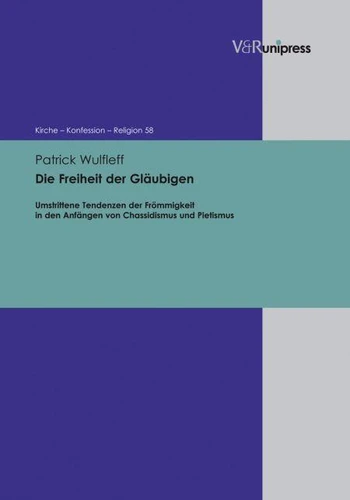Die Freiheit der Gläubigen. Umstrittene Tendenzen der Frömmigkeit in den Anfängen von Chassidismus und Pietismus
Par : , , , ,Formats :
Disponible dans votre compte client Decitre ou Furet du Nord dès validation de votre commande. Le format PDF est :
- Compatible avec une lecture sur My Vivlio (smartphone, tablette, ordinateur)
- Compatible avec une lecture sur liseuses Vivlio
- Pour les liseuses autres que Vivlio, vous devez utiliser le logiciel Adobe Digital Edition. Non compatible avec la lecture sur les liseuses Kindle, Remarkable et Sony
 , qui est-ce ?
, qui est-ce ?Notre partenaire de plateforme de lecture numérique où vous retrouverez l'ensemble de vos ebooks gratuitement
Pour en savoir plus sur nos ebooks, consultez notre aide en ligne ici
- Nombre de pages355
- FormatPDF
- ISBN978-3-86234-932-6
- EAN9783862349326
- Date de parution15/02/2012
- Protection num.pas de protection
- Taille2 Mo
- Infos supplémentairespdf
- ÉditeurV&R Unipress
Résumé
Neither protestant pietism nor East European Hasidism - two of the great modern pietistic movements - are attested to be innovative in the realm of theoretical theology. Both movements, however, caused a sensation among their contemporaries. Their pietistic practices show what was understood to be specifically pietistic or Hasidic. Against this background, the author scrutinizes this practical pietism as the key characteristic of both movements, thereby tying in and relating the polemical perspective of antipietism and anti-Hasidism to the original pietistic or Hasidic writings that give guidance on pietism.
This approach allows a systematic evaluation of two 'phenomena' that have repeatedly been termed "related" on account of rather superficial parallels. Going beyond the key identification criteria, it identifies modern pietistic tendencies within a frame of reference that goes beyond religious, cultural and territorial boundaries.
This approach allows a systematic evaluation of two 'phenomena' that have repeatedly been termed "related" on account of rather superficial parallels. Going beyond the key identification criteria, it identifies modern pietistic tendencies within a frame of reference that goes beyond religious, cultural and territorial boundaries.
Neither protestant pietism nor East European Hasidism - two of the great modern pietistic movements - are attested to be innovative in the realm of theoretical theology. Both movements, however, caused a sensation among their contemporaries. Their pietistic practices show what was understood to be specifically pietistic or Hasidic. Against this background, the author scrutinizes this practical pietism as the key characteristic of both movements, thereby tying in and relating the polemical perspective of antipietism and anti-Hasidism to the original pietistic or Hasidic writings that give guidance on pietism.
This approach allows a systematic evaluation of two 'phenomena' that have repeatedly been termed "related" on account of rather superficial parallels. Going beyond the key identification criteria, it identifies modern pietistic tendencies within a frame of reference that goes beyond religious, cultural and territorial boundaries.
This approach allows a systematic evaluation of two 'phenomena' that have repeatedly been termed "related" on account of rather superficial parallels. Going beyond the key identification criteria, it identifies modern pietistic tendencies within a frame of reference that goes beyond religious, cultural and territorial boundaries.



